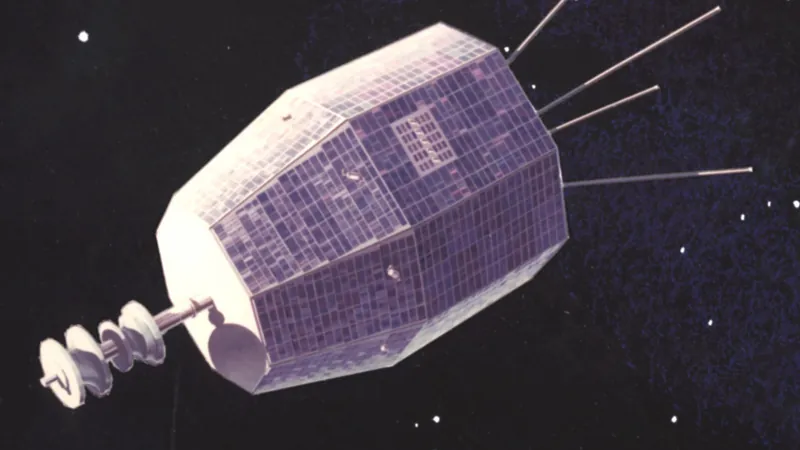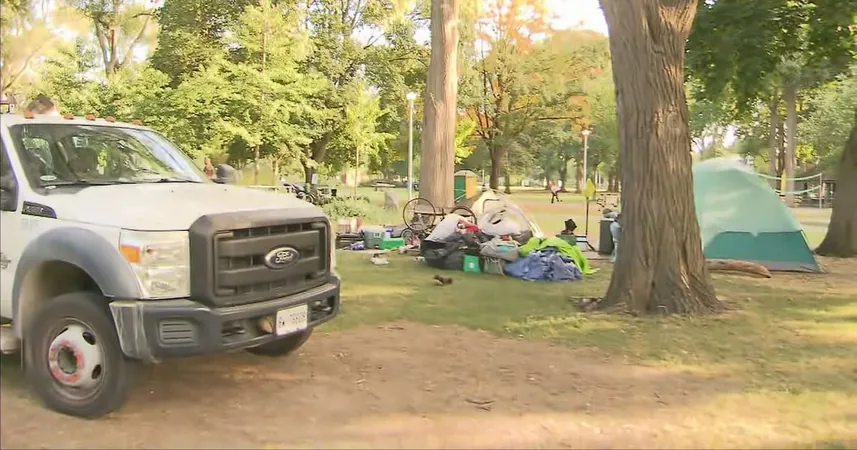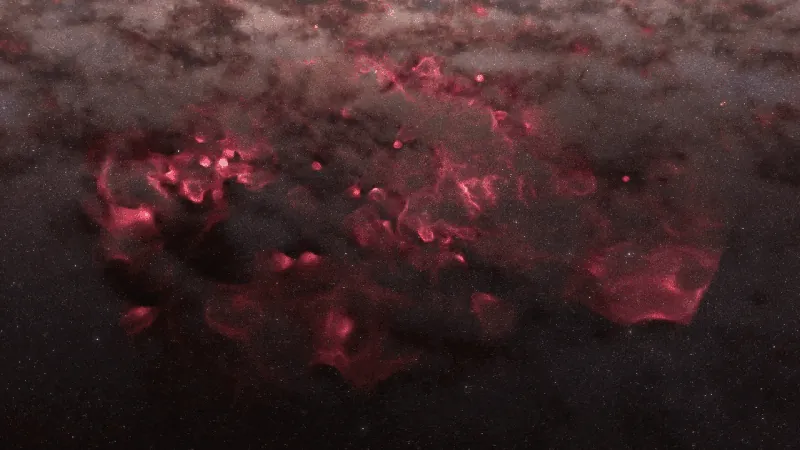
Zombie Satellite Sends Signals from Beyond: Scientists Stunned by Strange Radio Burst
2025-06-28
Author: William
Incredible Discovery Turns into a Cosmic Mystery
In a jaw-dropping twist straight out of a sci-fi movie, scientists recently published a paper on Cornell University's arXiv detailing an enigmatic radio burst that lasted a fleeting 30 nanoseconds. Initially believed to originate from a distant galaxy, the signal quickly unraveled into a captivating story about a 'zombie' satellite communicating from beyond the grave.
The Beginning of the Mystery
Detected by the Australian Square Kilometre Array Pathfinder (ASKAP) radio telescope in June 2024, this fast radio burst (FRB) was exciting news for researchers, as FRBs have baffled scientists ever since their discovery two decades ago. However, it wasn’t long before the signal began to raise eyebrows. It was far too brief for a regular FRB, which typically lasts for microseconds, not mere nanoseconds.
The Revelation: A Lonely Satellite?
As scientists delved deeper into the origins of the puzzling signal, they discovered that it was much closer than expected—likely from an orbiting satellite. A quick cross-reference with known satellite paths revealed the culprit: NASA's Relay 2, one of the earliest communication satellites launched in 1964, had been declared dead since its transponders failed in 1967.
A Dead Satellite Comes Back to Life?
So how could a satellite long past its operational days send off a powerful radio burst? The revelation sparked theories that seemed to defy the laws of physics. The onboard systems of Relay 2 lacked the capability to transmit a 30-nanosecond pulse, leading some to joke about an otherworldly or supernatural source.
Two Theories Emerge from the Abyss
Researchers proposed two fascinating theories to explain this inexplicable phenomenon. The first suggests that an electrostatic discharge (ESD) might have occurred, akin to the static electricity buildup when you rub your feet on the carpet and touch a metal object. In space, this 'carpet' could be ionized gas, potentially triggering a brief spark as Relay 2 navigated through it.
The second theory posits that a tiny micrometeorite, traveling at a staggering 44,000 mph, collided with the satellite. Such an impact could create a puff of charged plasma, detected by the radio telescope.
The Cosmic Curtain Yet to Be Lifted
While both hypotheses are mere speculations, they live in the realm of possibilities that illustrate the uncharted complexities of space. Could this signify new ways to detect faulty satellite equipment? Or does it hint at something far stranger? Whatever the case, one thing is undeniable: space is not just the final frontier—it’s an extraordinary enigma that's only just starting to be uncovered.









 Brasil (PT)
Brasil (PT)
 Canada (EN)
Canada (EN)
 Chile (ES)
Chile (ES)
 Česko (CS)
Česko (CS)
 대한민국 (KO)
대한민국 (KO)
 España (ES)
España (ES)
 France (FR)
France (FR)
 Hong Kong (EN)
Hong Kong (EN)
 Italia (IT)
Italia (IT)
 日本 (JA)
日本 (JA)
 Magyarország (HU)
Magyarország (HU)
 Norge (NO)
Norge (NO)
 Polska (PL)
Polska (PL)
 Schweiz (DE)
Schweiz (DE)
 Singapore (EN)
Singapore (EN)
 Sverige (SV)
Sverige (SV)
 Suomi (FI)
Suomi (FI)
 Türkiye (TR)
Türkiye (TR)
 الإمارات العربية المتحدة (AR)
الإمارات العربية المتحدة (AR)